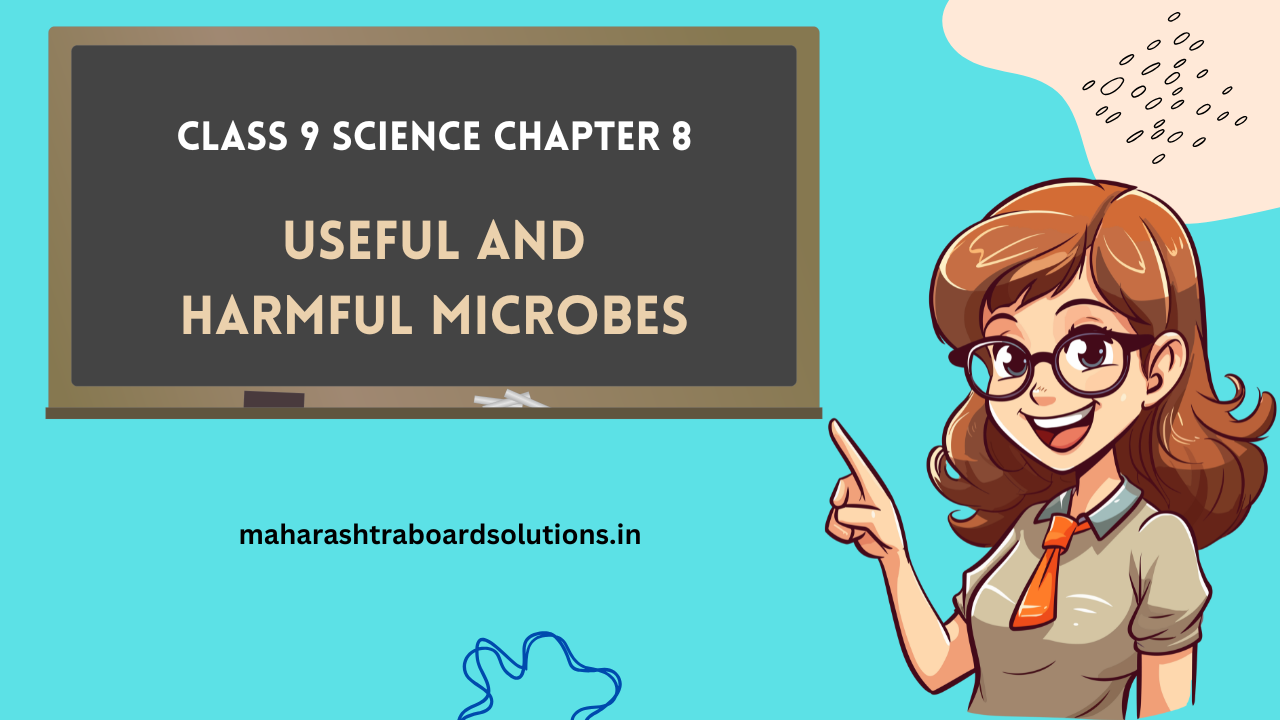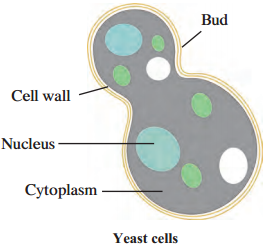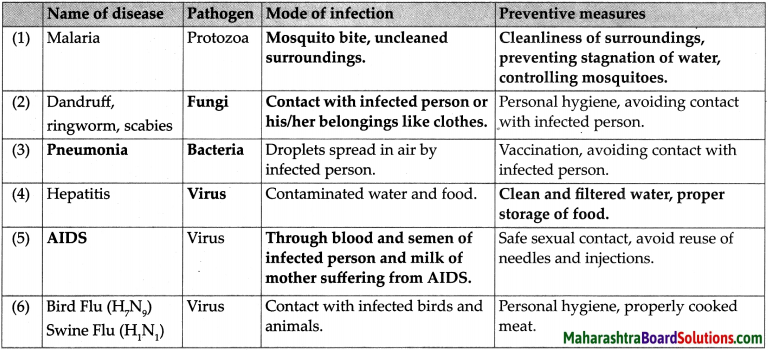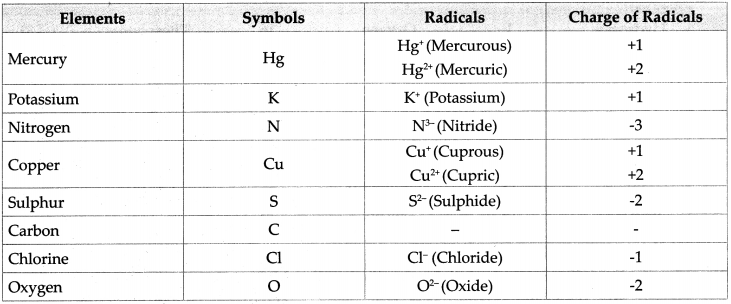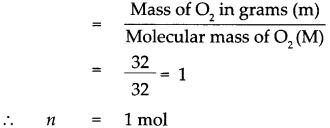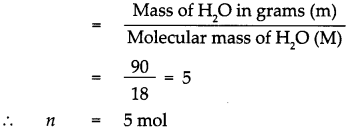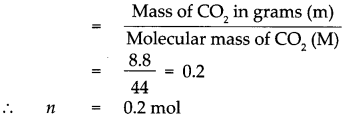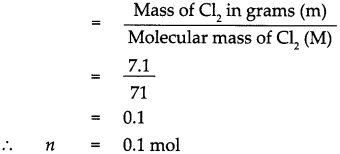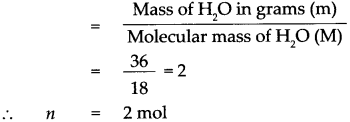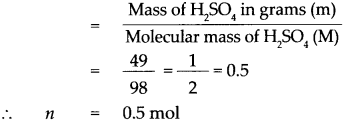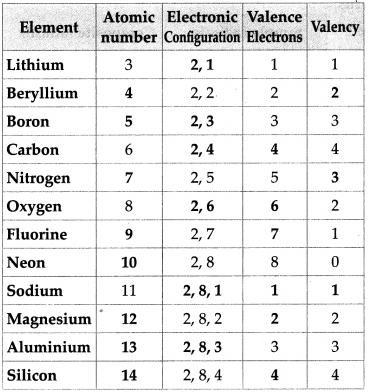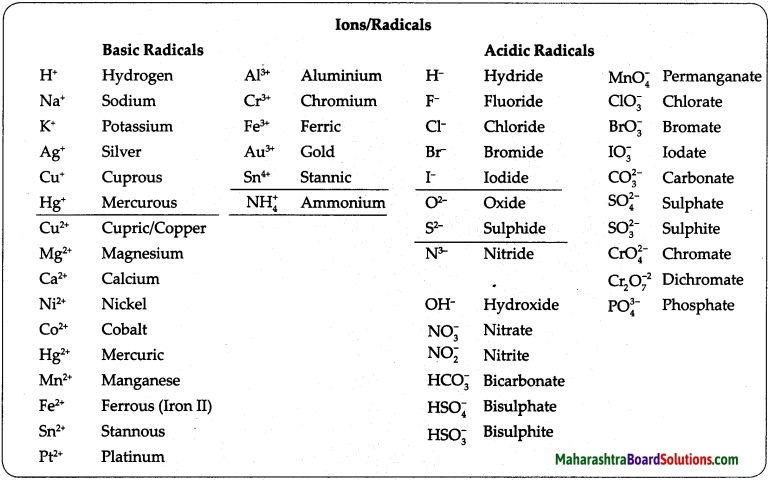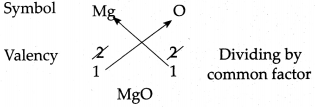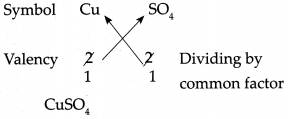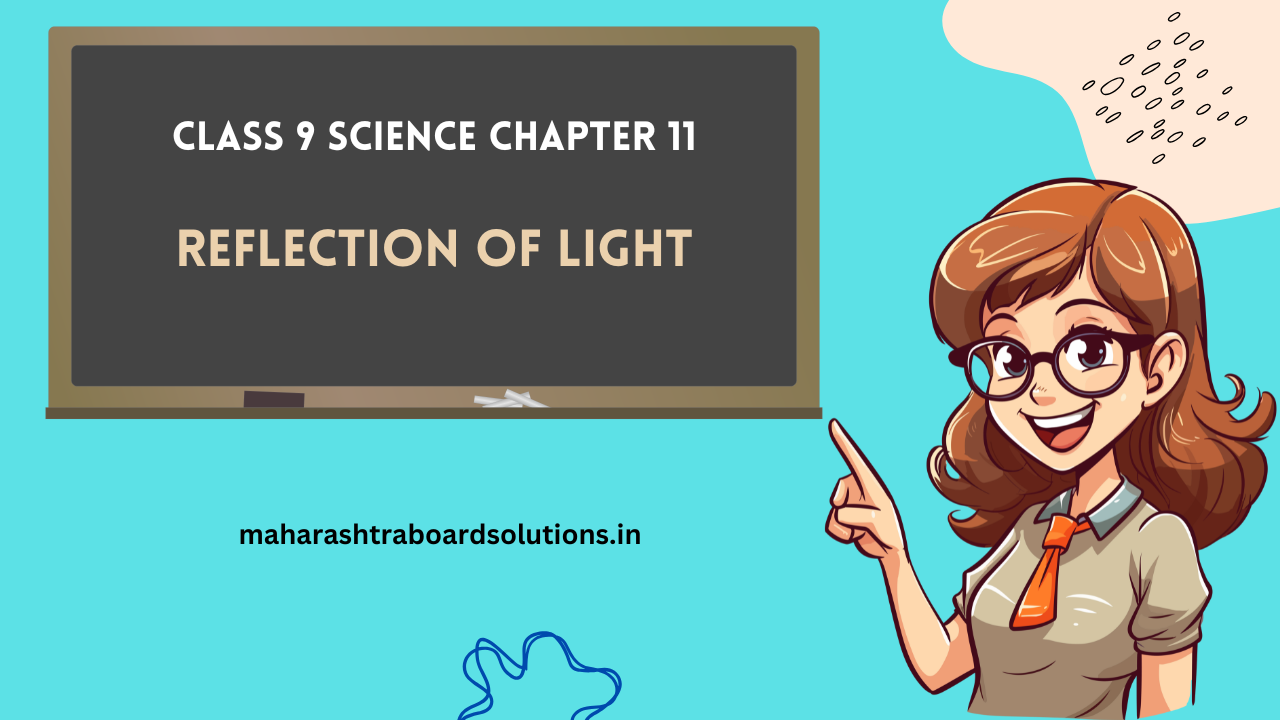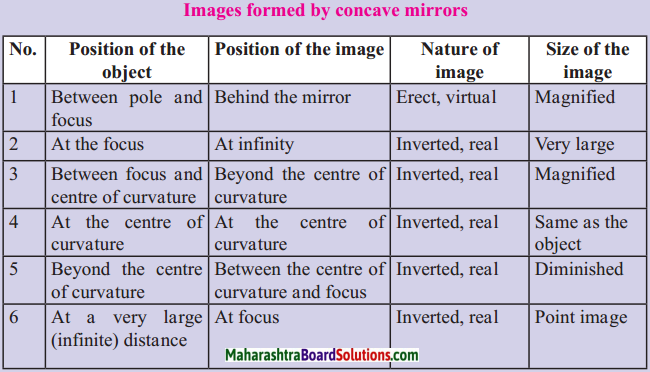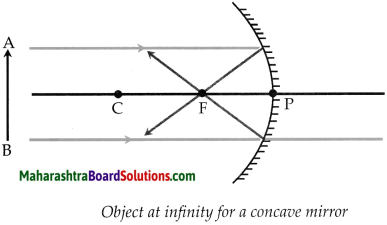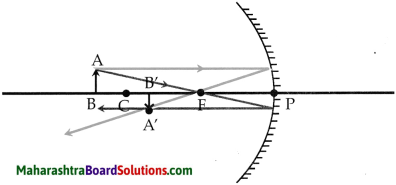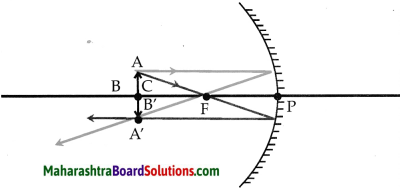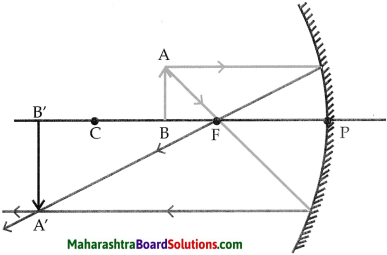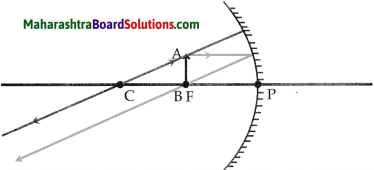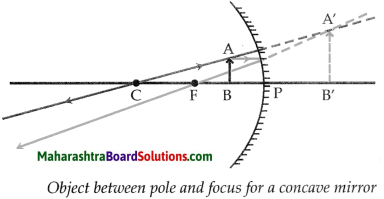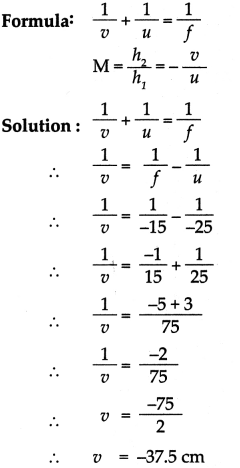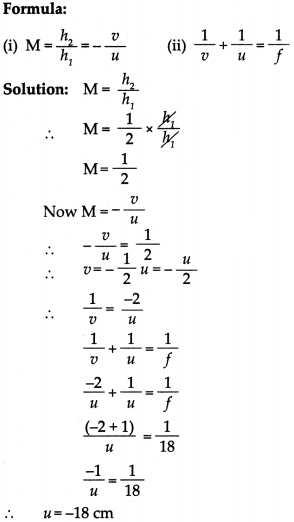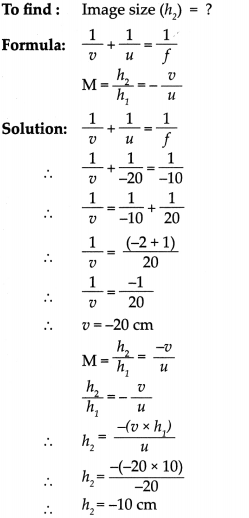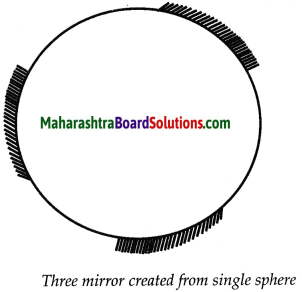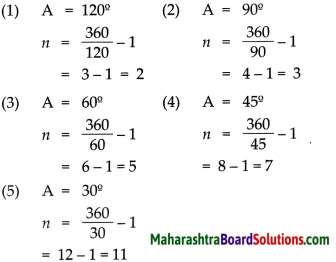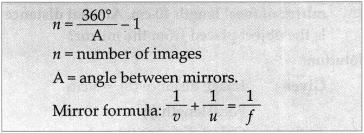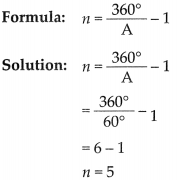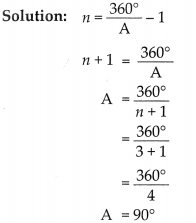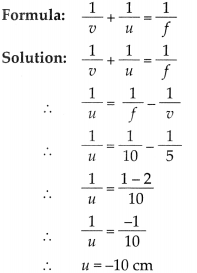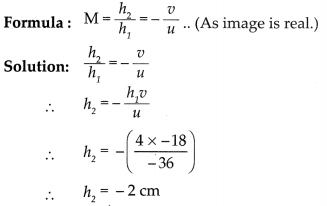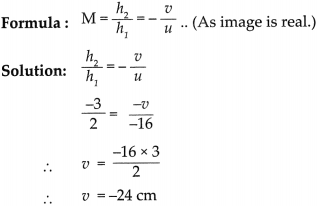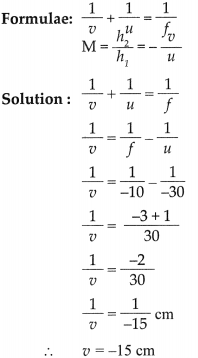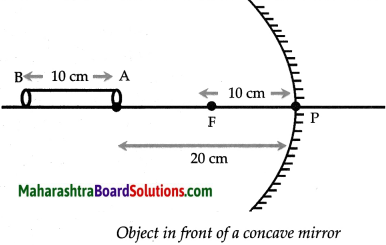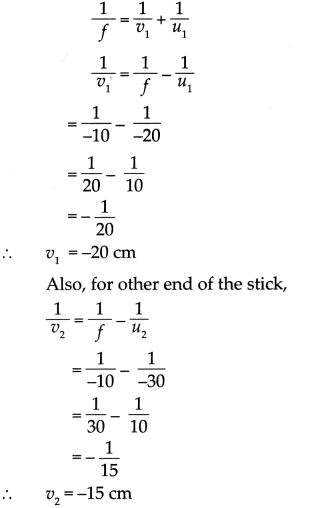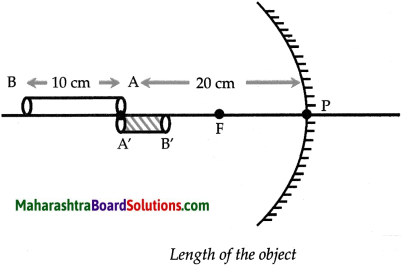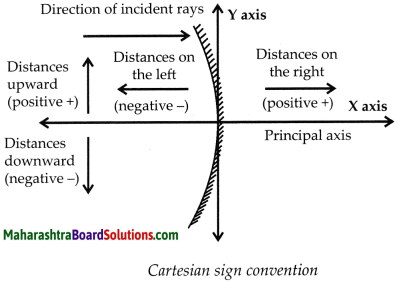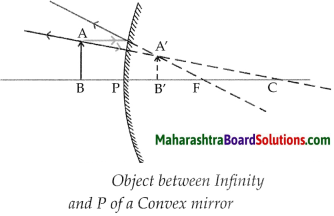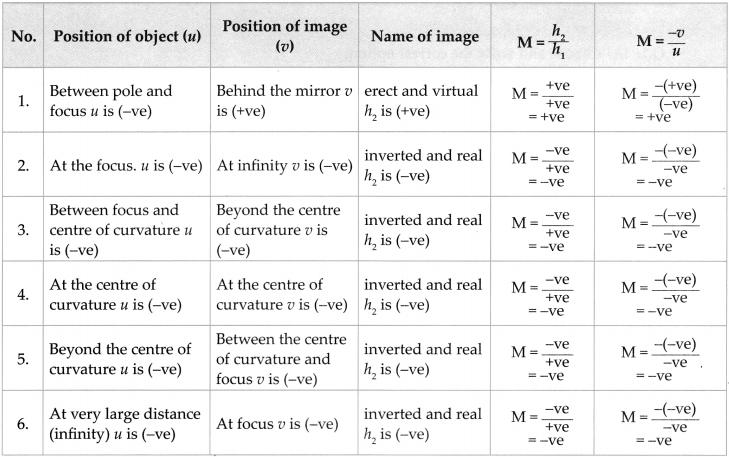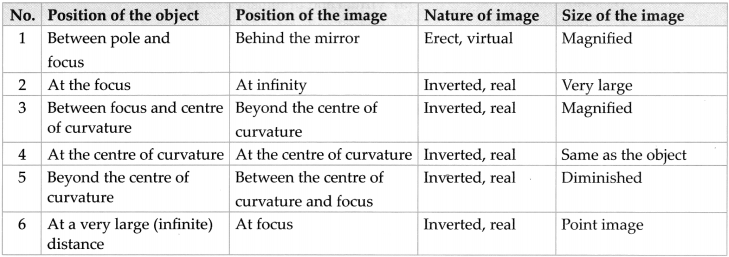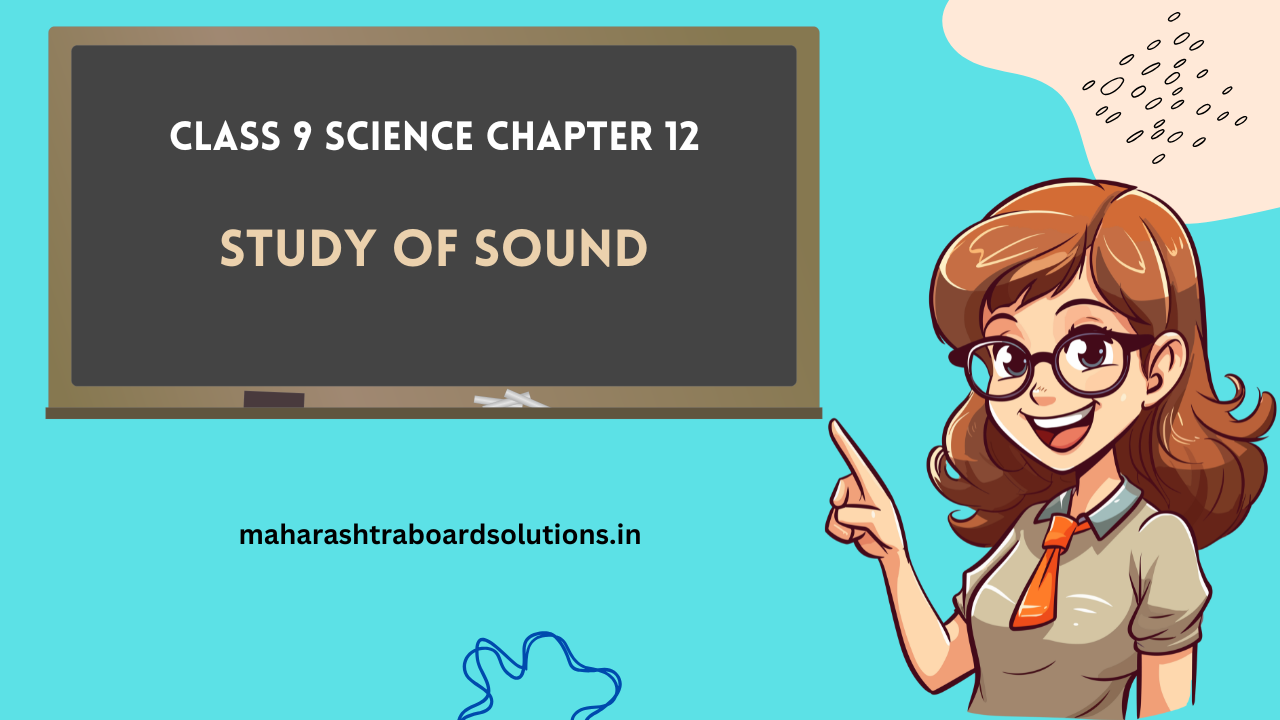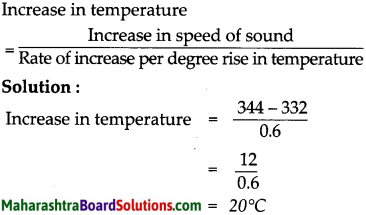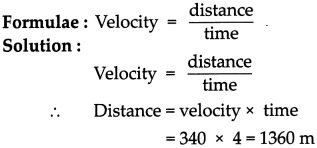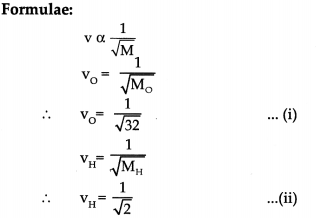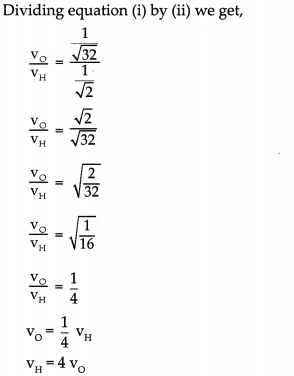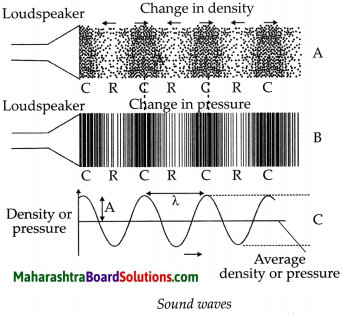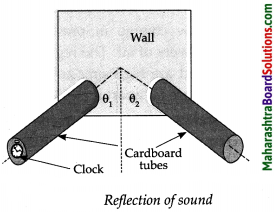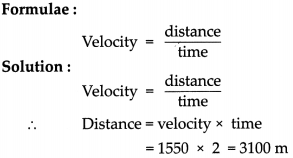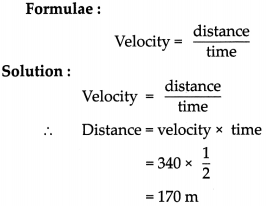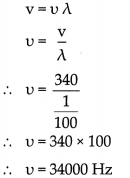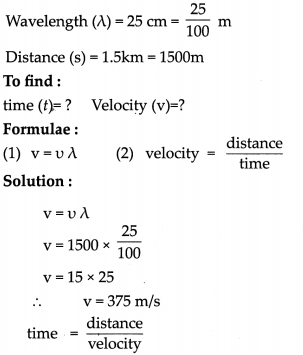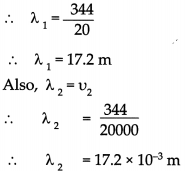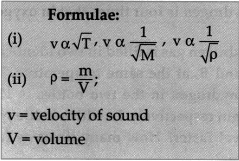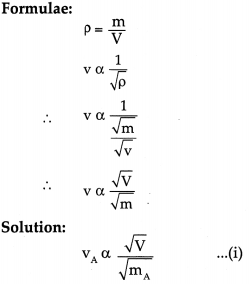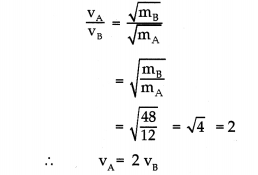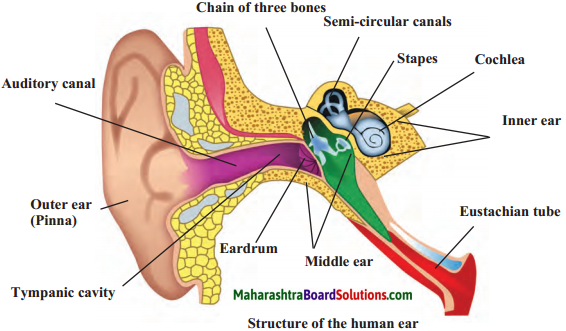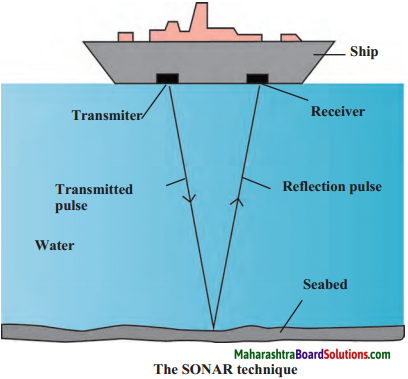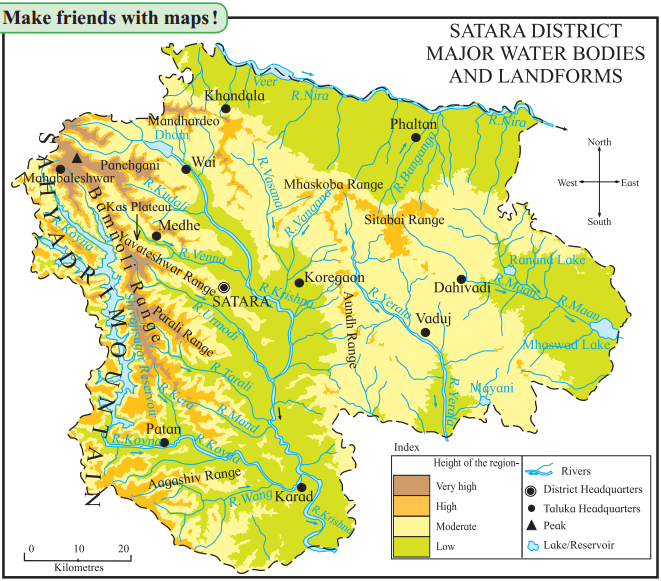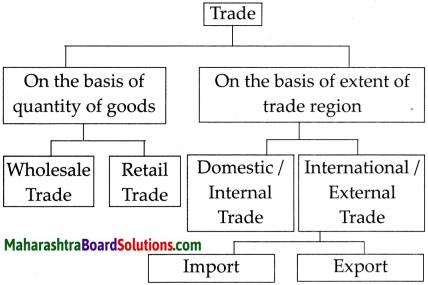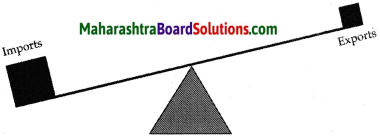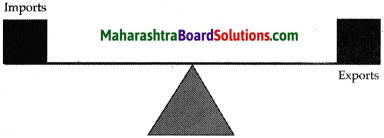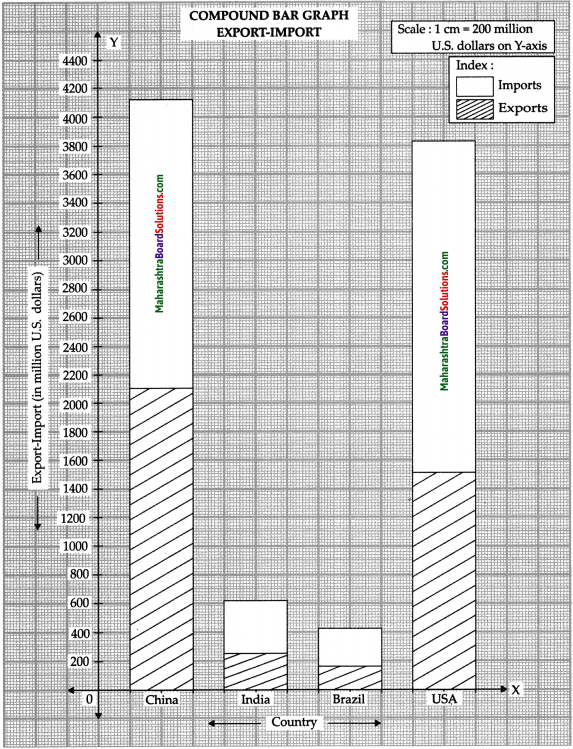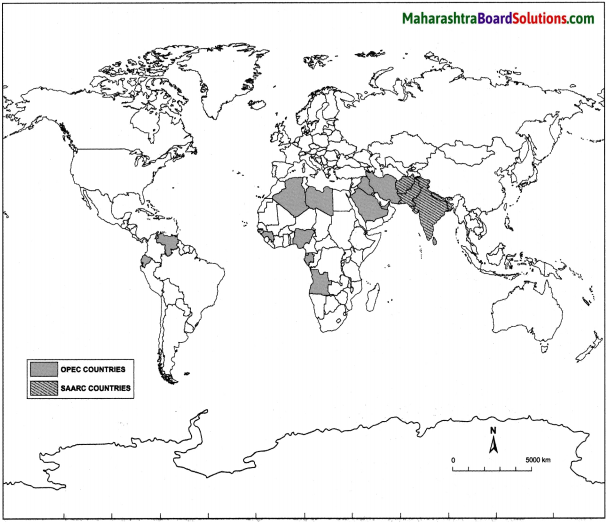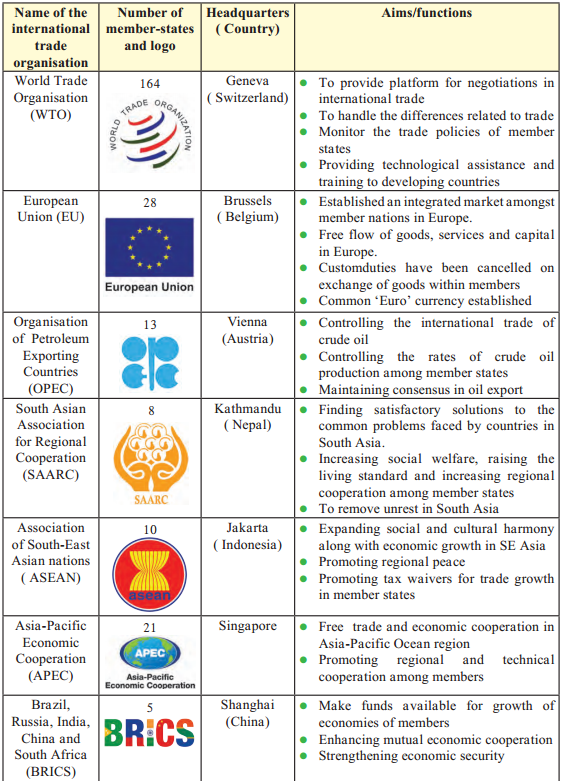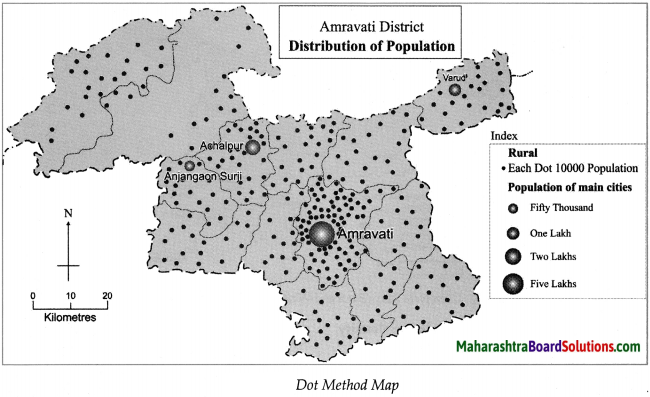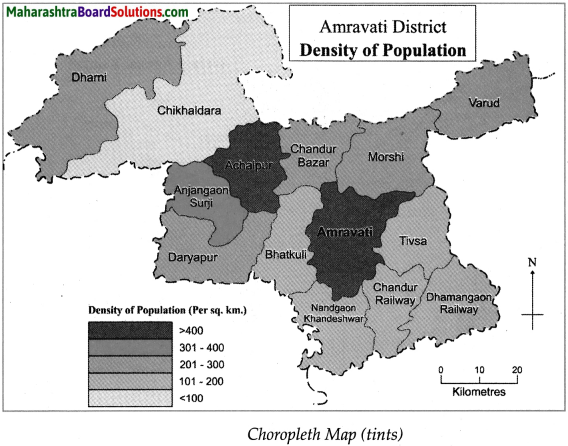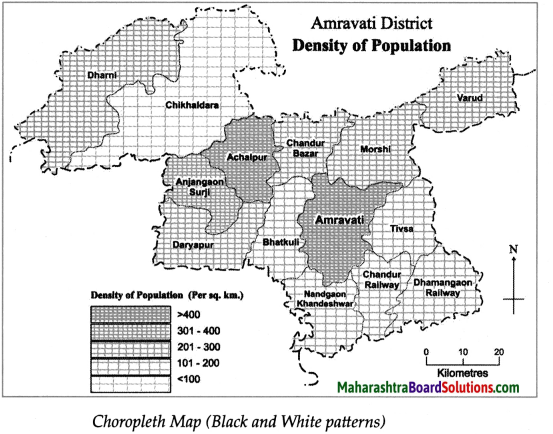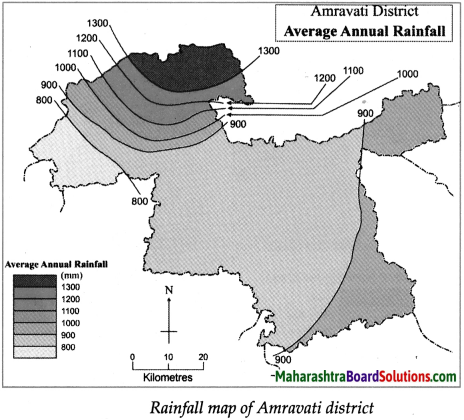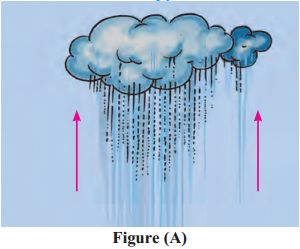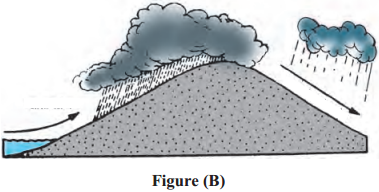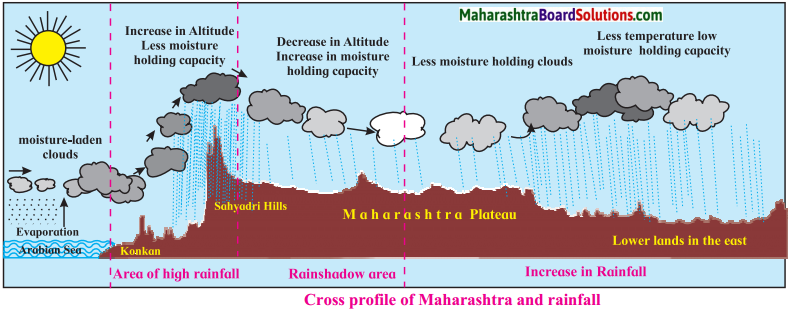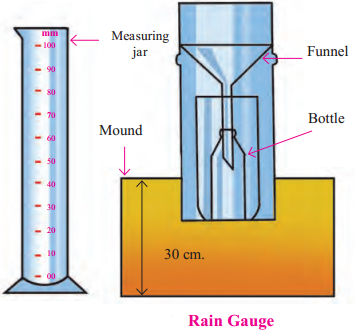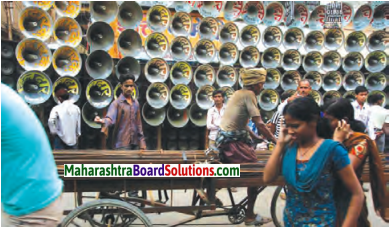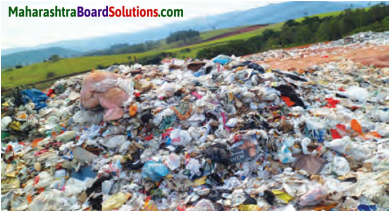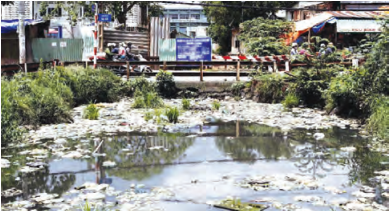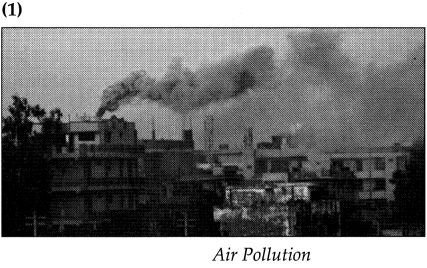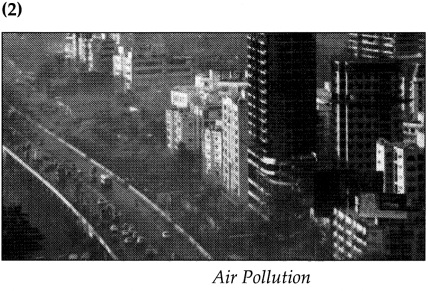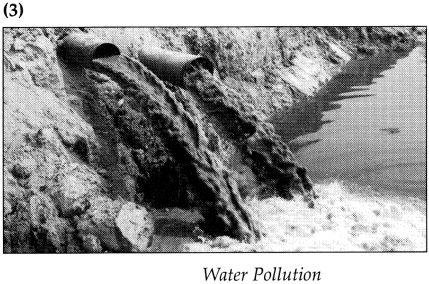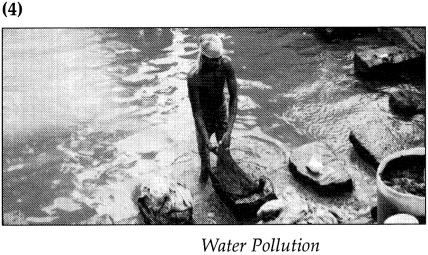Balbharti Maharashtra State Board Class 9 Science Solutions Chapter 6 Classification of Plants Notes, Textbook Exercise Important Questions and Answers.
Std 9 Science Chapter 6 Classification of Plants Question Answer Maharashtra Board
Class 9 Science Chapter 6 Classification of Plants Question Answer Maharashtra Board
1. Match the proper terms from columns A and C with the description in column B.

2. Complete the sentences by filling in the blanks and explain those statements.
(angiosperms, gymnosperms, spore, Bryophyta, thallophyta, zygote)
a. ……………….. plants have soft and fiber-like body.
b. ……………….. is called the ‘amphibian’ of the plant kingdom.
Answer:
Bryophyta plant is called the ‘amphibian’ of the plant kingdom
![]()
c. In pteridophytes, asexual reproduction occurs by ……………….. formation and sexual reproduction occurs by ………………..formation.
Answer:
Spore, zygote: Pteridophyta plants show alteration of generation. One generation reproduces by spore-formation and the next generation reproduces sexually by zygote formation.
d. Male and female flowers of ……………….. are borne on different sporophylls of the same plant.
Answer:
Gymnosperms bear their male and female flowers on different sporophylls of the same plant
3. Answer the following questions in your own words.
a. Write the characteristics of subkingdom Phanerogams.
Answer:
- Plants which have special structures for reproduction and produce seeds are called Phanerogams.
- In these plants, after the process of reproduction, seeds are formed which contain the embryo and stored food.
- During the germination of the seed, the stored food is used for the initial growth of the embryo.
- Depending upon whether seeds are enclosed in a fruit or not phanerogams are classified into gymnosperms and angiosperms.
b. Distinguish between monocots and dicots.
Answer:
| Dicots | Monocots | |
| Seed | Two cotyledons | Single cotyledon |
| Root | Well developed, primary root (Taproot) | Fibrous roots |
| Stem | Strong, hard. e.g. Banyan tree | Hollow, e.g. Bamboo False, e.g. Banana Disc-like, e.g. Onion. |
| Leaf | Reticulate venation | Parallel venation |
| Flower | Flowers with 4 or 5 parts or in their multiples (tetramerous or pentamerous) | Flowers with 3 parts or in multiples of three (trimerous). |
c. Write a paragraph in your own words about the ornamental plants called ferns.
Answer:
- Ferns belong to the group of plants called Pteridophyta.
- They have well-developed roots, stem and leaves but do not bear flowers and fruits.
- They have separate tissues for the conduction of food and water.
- They reproduce with the help of spores formed along the back or posterior surface of their leaves.
- They reproduce asexually by spore formation and sexually by zygote formation.
![]()
d. Sketch, label and describe the Spirogyra.
e. Write the characteristics of the plants belonging to division Bryophyta.
Answer:
- Bryophyta group of plants are called the amphibians of the plant kingdom because they grow in moist soil but need water for reproduction.
- These plants are thalloid, multicellular and autotrophic.
- They reproduce by spore-formation.
- Their plant body structure is flat, ribbon-like, long, without true roots, stem and leaves.
- Instead, they have stem-like or leaf-like parts and root-like rhizoids.
- They do not have specific tissues for the conduction of food and water.
- Examples: Moss (Funaria), Anthoceros, Riccia etc.?
4. Sketch and label the figures of the following plants and explain them into brief.
Marchantia, Funaria, Fern, Spirogyra.
Question 1.
Spirogyra.
Answer:
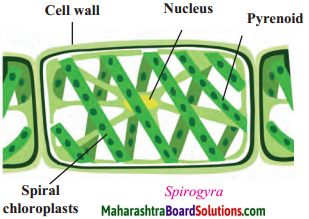
- Spirogyra belongs to the division thallophyta. They are called as algae.
- It grows mainly in water.
- It does not have specific parts like root-stem- leaves-flowers but are autotrophic due to the presence of chlorophyll.
- The plant body of Spirogyra is soft and fibre-like.
- It has spirally arranged chloroplasts in its cell.
Question 2.
Funaria and Marchantia (Bryophyta)
Answer:

- These plants are called ‘amphibians’ of the plant kingdom because they grow mostly in soil and need water for reproduction.
- They do not have specific tissues for the conduction of food and water.
- The plant body is fiat, ribbon-like long, without true roots, stem and leaves
- Instead, they have stem-like or leaf-like parts and root like rhizoids.
![]()
Question 3.
Fern (Pteridophyta):
Answer:
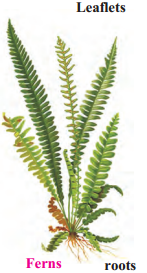
- They have well-developed roots, stem and leaves for the conduction of food and water.
- They do not bear flowers and fruits.
- They reproduce with the help of spores present along the back or posterior surface of the leaves.
5. Collect a monocot and dicot plant available in your area. Observe the plants carefully and describe them in scientific language.
6. Which criteria are used for the classification of plants? Explain with reasons.
Answer:
Criteria for classification of plants:
- If plants do not bear flowers, fruits and seeds, they are non-seed bearing plants. If they bear flowers, fruit and seeds, they are seed-bearing plants.
- Presence or absence of conducting tissues- Plants such as pteridophytes, gymnosperms and angiosperms which possess conducting tissues are included in vascular plants whereas thallophytes and bryophytes which do not possess conducting tissues are included under non-vascular plants.
- Depending upon whether the seeds are enclosed in fruit or not, plants are classified as gymnosperms (naked-seeds) and angiosperms (seeds covered by fruit)

- Depending upon the number of cotyledons in seeds, plants are classified into dicotyledons and monocotyledons
Class 9 Science Chapter 6 Classification of Plants Intext Questions and Answers
Can you recall?
Question 1.
How have living organisms been classified?
Answer:
(i) Organisms have been classified based on the following:
- Cell structure
- Body Organisation
- Mode of nutrition
- Reproduction
(ii) Organisms are also classified at kingdom level and groups and subgroups.
Activity-based questions
Question 1.
You may have seen a lush green soft carpet on old walls, bricks and rocks in the rainy season. Scrape it gently with a small ruler, observe it under a magnifying lens and discuss.
Answer:
- It shows considerable tissue complexity and is differentiated into two main parts: a root and a shoot.
- They have a variety of specialized tissues within these two regions of the body.
- Same kind of cells are seen throughout the whole body except reproductive cells.
Question 2.
You may have seen ferns among the ornamental plants in a garden. Take a leaf of a fully grown fern and observe it carefully.
Answer:
- New leaves typically expand by the unrolling in a tight spiral manner.
- The anatomy of fern leaves can either be simple or highly divided.
- They show the presence of spores formed along the back or posterior surface of their leaves.
Question 3.
Observe all garden plants like Cycas, Christmas tree, Hibiscus, Lily, etc. and compare them. Note the similarities and differences among them. Which differences did you notice in gymnosperms and angiosperms?
Answer:
Cycas and Christmas tree are gymnosperms, whereas Hibiscus and lily are angiosperms.
- Similarities: These plants have special structures for reproduction and produce seeds. During the germination of the seed, the stored food is used for the initial growth of the embryo.
- Differences: In gymnosperms, reproductive organs have cones whereas in angiosperms reproductive organs have flowers.
- In gymnosperms, seeds are without natural coverings whereas in angiosperms seeds are enclosed in natural coverings called fruits.
![]()
Question 4.
Soak the seeds of corns, beans, groundnut, tamarind, mango, wheat, etc. in water for 8 to 10 hrs. After they are soaked, check each seed to see whether it divides into two equal halves or not and categorize them accordingly.
Answer:
Monocots: com, wheat (it cannot be divided into equal halves)
Dicots: beans, groundnut, tamarind and mango (it can be divided into two equal halves)
Class 9 Science Chapter 6 Classification of Plants Additional Important Questions and Answers
Choose and write the correct option:
Question 1.
The five-kingdom classification was proposed b7
(a) Robert Whittaker
(b) Robert Hooke
(c) Eichler
(d) Louis Pasteur
Answer:
(a) Robert Whittaker
Question 2.
In 1883, classified plants into two sub-kingdoms.
(a) Robert Whittaker
(b) Alexander Fleming
(c) Eichler
(d) Robert Hooke
Answer:
(c) Eichler
Question 3.
Ulothrix, ulva, sargassum belong to
(a) Bryophyta
(b) Thallophyta
(c) Pteridophyta
(d) Gymnosperms
Answer:
(b) Thallophyta
![]()
Question 4.
is a bryophyte.
(a) Ulva
(b) Nephrolepis
(c) Funaria
(d) Equisetum
Answer:
(c) Funaria
Question 5.
In the seeds are naked.
(a) Pteridophyta
(b) Angiosperms
(c) Gymnosperms
(d) Bryophyta
Answer:
(c) Gymnosperms
Question 6.
In the flowers are reproductive organs.
(a) Angiosperms
(b) Gymnosperms
(c) Pteridophyta
(d) Bryophyta
Answer:
(a) Angiosperms
Question 7.
In the flowers are tetramerous or pentamerous.
(a) Monocotyledons
(b) Dicotyledons
(c) Gymnosperms
(d) Pteridophyta
Answer:
(b) Dicotyledons
![]()
Question 8.
In monocotyledonous plants, the stem is
(a) hollow
(b) false
(c) disc-like
(d) all of these.
Answer:
(d) all of these
Question 9.
Lycopodium belongs to
(a) Thallophyta
(b) Bryophyta
(c) Gymnosperms
(d) Pteridophyta
Answer:
(d) Pteridophyta
Question 10.
Leaves of show reticulate venation.
(a) Bamboo
(b) Banana
(c) Onion
(d) Banyan
Answer:
(d) Banyan
Question 11.
Various types of fungi like yeasts and moulds are included in the group
(a) Thallophyta
(b) Halophyte
(c) Xenophyta
(d) Angiosperms
Answer:
(a) Thallophyta
![]()
Question 12.
Bryophytes have a root-like structure called
(a) Nodes
(b) Rhizoids
(c) Nodules
(d) Aerenchyma
Answer:
(b) Rhizoids
Question 13.
reproduce with the help of spores formed along the back or posterior surface of their leaves.
(a) Halophyta
(b) Pteridophyta
(c) Thallophyta
(d) Angiosperms
Answer:
(b) Pteridophyta
Question 14.
In ……………………….., the reproductive organs cannot be seen.
(a) Pteridophyta
(b) Cryptogams
(c) Thallophyta
(d) Angiosperms
Answer:
(b) Cryptogams
Question 15.
are mostly evergreen, perennial and woody.
(a) Pteridophyta
(b) Thallophyta
(c) Gymnosperms
(d) Angiosperms
Answer:
(c) Gymnosperms
![]()
Question 16.
Gymnosperms bear male and female flowers on different of the same plant.
(a) Branches
(b) Roots
(c) Sporophylls
(d) Flowers
Answer:
(c) Sporophylls
Question 17.
In the seeds are not enclosed by fruit.
(a) Pteridophyta
(b) Thallophyta
(c) Gymnosperms
(d) Angiosperms
Answer:
(c) Gymnosperms
Question 18.
In the seeds are enclosed by fruit.
(a) Pteridophyta
(b) Thallophyta
(c) Gymnosperms
(d) Angiosperms
Answer:
(d) Angiosperms
Question 19.
The plants whose seeds cannot be divided into equal parts are called
(a) Algae
(b) Fungus
(c) Dicotyledons
(d) Monocotyledons
Answer:
(d) Monocotyledons
![]()
Question 20
The plants whose seeds can be divided into equal parts are called
(a) Algae
(b) Fungus
(c) Dicotyledons
(d) Monocotyledons
Answer:
(c) Dicotyledons
Find the odd one out:
Question 1.
Ulothrix, Ulva, Nephrolepis, Sargassum
Answer:
Nephrolepis: It belongs to division Pteridophyta whereas the others belong to division thallophyta.
Question 2.
Funaria, Marchantia, Anthoceros, Spirogyra
Answer:
Spirogyra:
Question 3.
Marsilea, Pteris, Lycopodium, Riccia
Answer:
Riccia:
Question 4.
Cycas, Mango, Apple, Banyan
Answer:
Cycas:
Question 5.
Onion, Papaya, Wheat, Green peas
Answer:
Green peas:
Complete the analogy:
(1) Spirogyra : Thallophyta : : Riccia :
(2) Moss : Bryophyta : : Selaginella :
(3) Nephrolepis : Pteridophyta :: Ulothrix :
(4) Pteridophyta : Roots :: Bryophyta :
(5) Gymnosperms : naked seeds : : Angiosperms :
(6) Dicotyledon : Reticulate venation : : Monocotyledon:
(7) Bamboo stem: Hollow:: Onion Stem:
(8) Monocotylendon : Tap root:: Dicotyledon :
Answer:
(1) Bryophyta
(2) Pteridophyta
(3) Thallophyta
(4) Rhizoids
(5) Covered seeds
(6) Parallel venation
(7) Disc like
(8) Fibrous roots
![]()
Difference between:
Question 1.
Thallophyta and Bryophyta
Answer:
| Thallophyta | Bryophyta |
| These plants grow mainly in water | They grow in moist soil but need water for reproduction |
Question 2.
Gymnosperms and Angiosperms
Answer:
| Gymnosperms | Angiosperms |
| No natural covering on seeds | Seeds are formed in fruits |
Question 3.
Algae and Moss
Answer:
| Algae | Moss |
| These plants mainly grow in water. | These plants need water for reproduction. |
State whether the following statements are true or false. Correct the false statements:
(1) Thallophyta are called as the amphibians of the plant kingdom.
(2) Fungi like yeasts and moulds are included in division bryophyta.
(3) Moss (Funaria) belongs to division bryophyta.
(4) Bryophyta have specific tissues for conduction of food and water.
(5) Plants belonging to Thallophyta group are only unicellular.
(6) Pteridophytes have well developed roots, stems and leaves.
(7) Pteridophytes reproduce with the help of spores formed along the back or posterior surface of their leaves.
(8) Nephrolepis belongs to division Pteridophyta.
(9) Depending upon whether seeds are enclosed in a fruit or not, phanerogams are classified into monocots and dicots.
(10) Gymnosperms are mostly evergreen, perennial and woody.
(11) Gymnosperms bear male and female flowers on different sporophylls of different plants.
(12) In Angiosperms, the seeds are covered by fruits.
(13) Dicotyledonous plants show reticulate venation.
(14) Moncotyledonous plants have trimerous flowers.
(15) In dicotyledonous plants, the stem is strong and hard.
Answer:
(1) False. Thallophyta plants grow mainly in water.
(2) False. Fungi like yeasts and moulds are included in division thallophyta.
(3) True
(4) False. Bryophyta do not have specialised tissuesfor conduction of food and water.
(5) False. Plants belonging to thallophyta group may be unicellular or multicellular.
(6) True
(7) True ![]()
(8) True
(9) False. Depending whether seeds are enclosed in. a fruit or not, angiosperms are classified into monocots and dicots.
(10) True
(11) False. Gymnosperms bear male and female flowers on different sporophylls of the same plant.
(12) True
(13) False. Dicotyledonous plants show parallel venation.
(14) True
(15) True.
Give name
Question 1.
What are ornamental plants are called?
Answer:
Ferns
Question 2.
Plants with two cotyledons are called.
Answer:
Dicots
Question 3.
Plants with single cotyledon are called.
Answer:
Monocots
Question 4.
Type of venation showed by hibiscus plant leaves
Answer:
Reticulate venation
Question 5.
Type of venation showed by lily plant leaves
Answer:
Parallel venation
One line answers
Question 1.
Which plants are mostly evergreen, perennial and woody?
Answer:
Gymnosperms are mostly evergreen, perennial and woody.
![]()
Question 2.
Which type of venation showed by dicot plants?
Answer:
Leaves of dicot plants show reticulated venation.
Question 3.
Which type of venation showed by monocot plants?
Answer:
Leaves of monocot plants show parallel venation
Question 4.
How are angiosperms classified into monocot and dicot?
Answer:
Depending whether seeds and enclosed in fruit or not, angiosperms are classified into monocot and dicot
Question 5.
In which division are fungi like moulds and yeast classified?
Answer:
Fungi like moulds and yeast classified in division thallophyta.
Question 6.
Plants belonging to which group may be unicellular or multicellular?
Answer:
Plants belonging to thallophyta group may be unicellular or multicellular
Give scientific reason
Question 1.
Thallophyta plants have thin and fibre like body
Answer:
Thallophyta: These plants grow mainly in water i.e. fresh water as well as in saline water, therefore they usually have a soft and fibre-like (filamentous) body.
Question 2.
Bryophyta plants are called the amphibian plants.
Answer:
Bryophyta: They grow in moist soil but need water for reproduction. Therefore, they are called ‘amphibians of plant kingdom’.
Question 3.
Gymnosperms bear their male and female flowers on different sporophylls of the same plant
Answer:
Gymnosperms: As these plants do not take the assistance of pollinators i.e. vectors, the male and female flowers are present on the different sporophyll of the same plant for successful fertilisation.
Write note on
Question 1.
August W. Eichler
Answer:
In 1883, Eichler, a botanist, classified the Kingdom Plantae into two subkingdoms. As a result, two subkingdoms, cryptogams and phanerogams were considered for plant classification.
![]()
Question 2.
Thallophyta
Answer:
These plants grow mainly in water. This group of plants, which do not have specific parts like root-stem-leaves-flowers but are autotrophic due to the presence of chlorophyll, is called algae. Algae show great diversity. They may be unicellular or multicellular, and microscopic or large. Examples of algae are Spirogyra, Ulothrix, Ulva, Sargassum, etc. Some of these are found in fresh water while some are found in saline water. These plants usually have a soft and fibre-like body. Various types of fungi like yeasts and moulds which do not have chlorophyll are also included in this group.
Question 3.
Bryophyta
Answer:
This group of plants is called the amphibians’ of the plant kingdom because they grow in moist soil but need water for reproduction. These plants are thalloid, multicellular and autotrophic. They reproduce by spore formation. The structure of the plant body of bryophytes is flat, ribbon-like long, without true roots, stem and leaves. Instead, they have stem-like or leaf-like parts and root-like rhizoids. They do not have specific tissues for conduction of food and water. Examples are Moss (Funaria), Marchantia, Anthoceros, Riccia, etc.
Question 4.
Pteridophyta
Answer:
Plants from this group have well developed roots, stem and leaves and separate tissues for conduction of food and water. But, they do not bear flowers and fruits. They reproduce with the help of spores formed along the back or posterior surface of their leaves. Examples are ferns like Nephrolepis, Marsilea, Pteris, Adiantum, Equisetum, Selaginella, Lycopodium, etc. These plants reproduce asexually by spore-formation and sexually by zygote formation. They have a well-developed conducting system.
Question 5.
Phanerogams
Answer:
Plants which have special structures for reproduction and produce seeds are called phanerogams. In these plants, after the process of reproduction, seeds are formed which contain the embryo and stored food. During germination of the seed, the stored food is used for the initial growth of the embryo. Depending upon whether seeds are enclosed in a fruit or not, phanerogams are classified into gymnosperms and angiosperms.
![]()
Question 6.
Gymnosperms
Answer:
Gymnosperms are mostly evergreen, perennial and woody. Their stems are without branches. The leaves form a crown. These plants bear male and female flowers on different sporophylls of the same plant. Seeds of these plants do not have natural coverings, i.e. these plants do not form fruits and are therefore called gymnosperms. (gymnos: naked, sperms: seeds). Examples Cycas, Picea (Christmas tree), Thuja (Morpankhi), Pinus (Deodar), etc.
Question 7.
Angiosperms
Answer:
The flowers these plants bear are their reproductive organs. Flowers develop into fruits and seeds are formed within fruits. Thus, these seeds are covered; hence, they are called angiosperms (angios: cover, sperms: seeds). The plants whose seeds can be divided into two equal halves or dicotyledons are called dicotyledonous plants and those whose seeds cannot be divided into equal parts are called monocotyledonous plants.
Complete the flow chart.
Question 1.
Living Organisms

Answer:

![]()
Question 2.
Kingdom: Plantae

Answer:
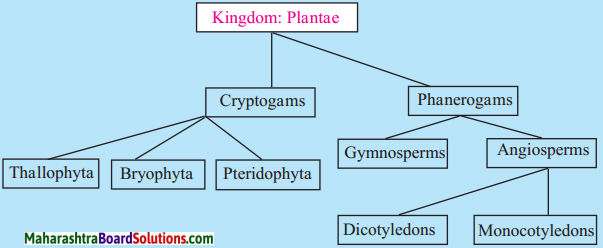
Distinguish between:
Question 1.
Bryophyta and Pteridophyta:
Answer:
| Bryophyta | Pteridophyta |
| Bryophytes grow in soil but need water for reproduction. | Pteridophytes grow in soil. |
| Plant body is without specific parts like true roots, stem and leaves. | Plant body is differentiated into true roots, stem and leaves. |
| Conducting tissues for food and water absent. | Conducting tissues for food and water present. |
| Examples: Moss (Funaria), Marchantia, Anthoceros, etc. | Examples: Nephrolepis, Marsilea, Pteris, Adiantum, Lycopodium etc. |
Question 2.
Angiosperms and Gymnosperms.
Answer:
| Angiosperms | Gymnosperms |
| (i) In Angiosperms, the stems have branches. | (i) In Gymnosperms, the stems are without branches. |
| (ii) Reproductive organs are flowers. | (ii) Reprodcutive organs are cones. |
| (iii) Seeds are enclosed in natural coverings, i.e., fruits. | (iii) Seeds are not enclosed in natural coverings. |
| (iv) Examples: Mango, Bamboo, etc. | (iv) Examples: Cycas, Picea etc. |
Question 3.
Cryptogams and Phanerogams.
Answer:
| Cryptogams | Phanerogams |
| (iii) Their reproductive organs are hidden. | (iii) Their reproductive organs are exposed. |
| (iii) They reproduce by forming spores. | (iii) They reproduce by forming seeds. |
| (iii) They are less evolved plants. | (iii) They are highly evolved plants. |
| (iv) They are divided into Thallophyta, | (iv) They are divided into Gymnosperms and |
| Bryophyta, Pteridophyta. | Angiosperms. |
Distinguish between:
Question 1.
Thallophyta
Answer:
Spirogvra, Ulothrix, Ulva, Sargassum
![]()
Question 2.
Bryophyta
Answer:
Moss (Funaria), Marchantia, Anthoceros, Riccia
Question 3.
Pteridophyta
Answer:
Nephrolepis, Marsilea, Pteris, Adiantum, Equisetum, Selaginella, Lycopodium
Question 4.
Gymnosperms
Answer:
Cycas, Picca (Christmas tree), Thuja (Morpankhi), Pinus (Deodar)
Question 5.
Angiosperms
Answer:
Tamarind, Mango, Apple, Lemon
Question 6.
Monocot plants
Answer:
Bamboo, bananas, corn, daffodils, garlic, ginger, grass, lilies, onions, orchids, rice, sugarcane, tulips, and wheat
Question 7.
Dicot plants
Answer:
Rose, sunflower, grapes, strawberries, tomatoes, peas, peanuts and potatoes
Observe the figure and answer the questions
1. Dicot Plants
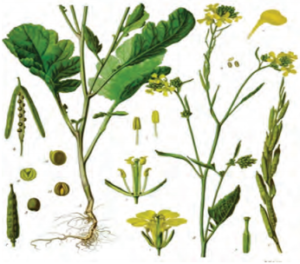
Question 1.
What are the characteristics of the above plants in terms of root system?
Answer:
Well developed, primary root (Tap root)
![]()
Question 2.
What are the characteristics of the above plants in terms of flowers?
Answer:
Flowers with 4 or 5 parts or in their multiples (tetramerous or pentamerous)
Question 3.
What are the characteristics of the above plants in terms of leaf venations?
Answer:
Reticulate Venation
Question 4.
What are the characteristics of the above plants in terms of type of stem?
Answer:
Strong and hard
Question 5.
What are the characteristics of the above plants in terms of seed?
Answer:
Two cotyledons
Question 6.
Give example of the following types of plants
Answer:
Rose, sunflower, grapes, strawberries, tomatoes, peas, peanuts and potatoes
2. Monocot Plants
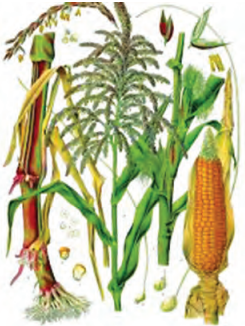
Question 1.
What are the characteristics of the above plants in terms of root system?
Answer:
Fibrous roots
![]()
Question 2.
What are the characteristics of the above plants in terms of flowers?
Answer:
Flowers with 3 parts or in multiples of three (trimerous).
Question 3.
What are the characteristics of the above plants in terms of leaf venations?
Answer:
Parallel Venation
Question 4.
What are the characteristics of the above plants in terms of type of stem?
Answer:
Hollow, False or Disc-like
Question 5.
What are the characteristics of the above plants in terms of seed?
Answer:
Single cotyledons
Question 6.
Give example of the following types of plants
Answer:
Bamboo, bananas, com, daffodils, garlic, ginger, grass, lilies, onions, orchids, rice, sugarcane, tulips, and wheat
3. Spirogyra
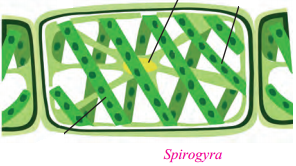
Question 1.
Which division of plants does this plant come under?
Answer:
This plant come under Division I Thallophyta.
Question 2.
Where does this plant grow?
Answer:
These plants grow mainly in water.
![]()
Question 3.
Are these types of plants unicellular or multicellular?
Answer:
They may be unicellular or multicellular and microscopic or large.
Question 4.
Are these types of plant autotropic?
Answer:
They are autotrophic due to the presence of chlorophyll but types of fungi like yeasts and moulds which do not have chlorophyll are also included in this group.
Question 5.
Do these plants have a root-stem-leaves-flowers system?
Answer:
They do not have specific parts like root-stem- leaves-flowers.
Question 6.
How is the body of these types of plants?
Answer:
These plants usually have a soft and fibre-like body.
4. Funaria
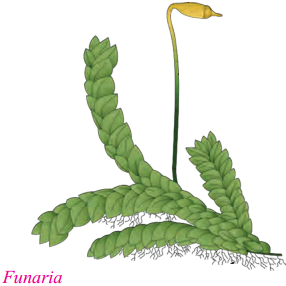
Question 1.
Which division of plants does this plant come under?
Answer:
This plant come under Division II Bryophyta.
Question 2.
Where does this plant grow?
Answer:
They grow in moist soil but need water for reproduction.
![]()
Question 3.
What are these group of plants called in the plant kingdom?
Answer:
This group of plants is called the ‘amphibians’ of the plant kingdom.
Question 4.
Are these types of plant autotropic?
Answer:
They reproduce by spore formation.
Question 5.
Do these plants have root-stem-leaves-flowers system?
Answer:
The structure of the plant body of bryophytes is flat, ribbon-like long, without true roots, stem and leaves.
Question 6.
What do these plants have instead of roots?
Answer:
They have root like rhizoids.
5. Fern
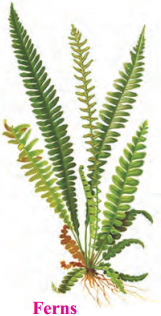
Question 1.
Which division of plants does this plant come? under?
Answer:
This plant come under Division III Pteridophy ta.
Question 2.
Where does this plant grow?
Answer:
They grow in soil.
![]()
Question 3.
How do these plants reproduce?
Answer:
These plants reproduce asexually by spore- formation and sexually by zygote formation.
Question 4.
Do these plants produce flowers and fruits?
Answer:
They do not bear flowers and fruits.
Question 5.
Do these plants have root-stem-leaves-flowers system?
Answer:
Plants from this group have well developed roots, stem and leaves and separate tissues for conduction of food and water.
Question 6.
Where are the spores formed in the plants body?
Answer:
The spores formed along the back or posterior surface of their leaves.
6. Cycas

Question 1.
Which division of plants does this plant come under?
Answer:
This plant come under Division III Phanerogams Division I Gymnosperms.
Question 2.
Explain structure of these types of plants?
Answer:
Gymnosperms are mostly evergreen perennial and woody.
![]()
Question 3.
How is stem and leaves of these types of plants?
Answer:
Their stems are without branches and the leaves form a crown.
Question 4.
Where are the male and female flowers located?
Answer:
These plants bear male and female flowers on different sporophylls of the same plant.?
Question 6.
Give some examples of these types of plants?
Answer:
Rose, sunflower, grapes, strawberries, tomatoes, peas, peanuts and potatoes
7. Monocot and Dicot plants
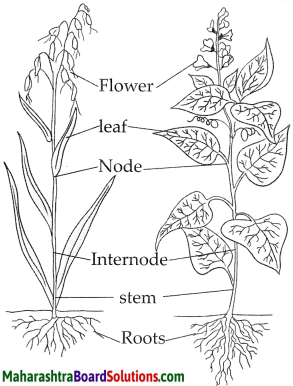
Question 1.
Which division of plants does this plant come under?
Answer:
ThisplantcomeunderDivisionlllPhanerogams Division II Angiosperms
![]()
Question 2.
How are the seeds of these types of planis?
Answer:
The seeds are formed within fruits thus these seeds are covered
Question 3.
How can we classify the plants according to their seeds in this division?
Answer:
The plants whose seeds can be divided into two equal halves or dicotyledons are called dicotyledonous plants and those whose seeds cannot be divided into equal parts are called monocotyledonous plants.
Question 4.
How the venations are present on the leaves of these types of plants?
Answer:
These plants bear parallel or reticulated venations on the leaves.
Question 5.
How is the root system of these types of plants?
Answer:
The root systems of these types of plant are tap roots or fibrouš roots.
Complete the paragraph
Question 1.
Thallophyta plants grow mainly in …………….. . This group of plants, which do not have specific parts like root-stem-leaves-flowers but are autotrophic due to the presence of …………….., is called algae. Algae show great diversity. They may be unicellular or …………….., and microscopic or large. Examples of algae are Spirogyra, Ulothrix, Ulva, Sargassum, etc. Some of these are found in fresh water while some are found in saline water. These plants usually have a …………….. and fibre-like body. Various types of …………….. like yeasts and moulds which do not have …………….. are also included in this group.
Answer:
Thallophyta plants grow mainly in water. This group of plants, which do not have specific parts like root-stem-leaves-flowers but are autotrophic due to the presence of chlorophyll, is called algae. Algae show great diversity. They may be unicellular or multicellular, and microscopic or large. Examples of algae are Spirogyra, Ulothrix, Ulva, Sargassum, etc. Some of these are found in fresh water while some are found in saline water. These plants usually have a soft and fibre-like body. Various types of fungi like yeasts and moulds which do not have chlorophyll are also included in this group.
![]()
Question 2.
…………….. group of plants is called the amphibians’ of the plant kingdom because they grow in moist soil but need …………….. for reproduction. These plants are thalloid, multicellular and autotrophic. They reproduce by …………….. formation. The structure of the plant body of bryophytes is flat, ribbon?like long, without true …………….., stem and leaves. Instead, they have stem-like or leaf?like parts and root-like ……………. . They do not have specific …………….. for conduction of food and water. Examples are Moss (Funaria), Marchantia, Anthoceros, Riccia, etc.
Answer:
Bryophyta group of plants is called the ‘amphibians’ of the plant kingdom because they grow in moist soil but need water for reproduction. These plants are thalloid, multicellular and autotrophic. They reproduce by spore formation. The structure of the plant body of bryophytes is flat, ribbon-like long, without true roots, stem and leaves. Instead, they have stem-like or leaf-like parts and root-like rhizoids. They do not have specific tissues for conduction of food and water. Examples are Moss (Funaria), Marchantia, Anthoceros, Riccia, etc.
Question 3.
Plants from Pteridophyta group have well developed roots, stem and leaves and separate …………….. for conduction of food and water. But,
they do not bear …………….. and ……………… They reproduce with the help of …………….. formed along the back or posterior surface of their leaves. Examples are ferns like Nephrolepis, Marsilea, Pteris, Adiantum, Equisetum, Selaginella, Lycopodium, etc. These plants reproduce …………….. by spore-formation and sexually by …………….. formation. They have a well-developed conducting system.
Answer:
Plants from Pteridophyta group have well developed roots, stem and leaves and separate tissues for conduction of food and water. But, they do not bear flowers and fruits. They reproduce with the help of spores formed along the back or posterior surface of their leaves. Examples are ferns like Nephrolepis, Marsilea, Pteris, Adiantum, Equisetum, Selaginella, Lycopodium, etc. These plants reproduce asexually by spore-formation and sexually by zygote formation. They have a well-developed conducting system.
Question 4.
Phanerogams plants which have special structures for …………….. and produce …………….. In these plants, after the process of reproduction, seeds are formed which contain the …………….. and stored food. During germination of the seed, the stored food is used for the initial growth of the embryo. Depending upon whether seeds are enclosed in …………….. a or not, phanerogams are classified into …………….. and ……………. .
Answer:
Phanerogams plants which have special structures for reproduction and produce seeds. In these plants, after the process of reproduction, seeds are formed which contain the embryo and stored food. During germination of the seed, the stored food is used for the initial growth of the embryo. Depending upon whether seeds are enclosed in a fruit or not, phanerogams are classified into gymnosperms and angiosperms.
![]()
Question 5.
Gymnosperms are mostly …………….., perennial and woody. Their stems are without …………….. The leaves form a …………….. These plants bear male and female flowers on different …………….. of the same plant …………….. of these plants do not have natural coverings, i.e. these plants do not form …………….. and are therefore called gymnosperms. (gymnos: naked, sperms: seeds). Examples Cycas, Picea (Christmas tree), Thuja (Morpankhi), Pinus (Deodar), etc.
Answer:
Gymnosperms are mostly evergreen, perennial • and woody. Their stems are without branches. The leaves form a crown. These plants bear male and female flowers on different sporophylls of the same plant. Seeds of these plants do not have natural coverings, i.e. these plants do not form fruits and are therefore called gymnosperms. (gymnos: naked, sperms: seeds). Examples Cycas, Picea (Christmas tree), Thuja (Morpankhi), Pinus (Deodar), etc.
Question 6.
The flowers of Angiosperms plants bear are their …………….. organs Flowers develop into …………….. and seeds are formed within …………….. . Thus, these seeds are ……………..; hence, they are called angiosperms (angios: cover, sperms: seeds). The plants whose seeds can be divided into two equal halves or dicotyledons are called …………….. plants and those whose seeds cannot be divided into equal parts are called …………….. plants.
Answer:
The flowers of Angiosperms plants bear are their reproductive orgAnswer: Flowers develop into fruits and seeds are formed within fruits. Thus, these seeds are covered; hence, they are called angiosperms (angios: cover, sperms: seeds). The plants whose seeds can be divided into two equal halves or dicotyledons are called dicotyledonous plants and those whose seeds cannot be divided into equal parts are called monocotyledonous plants.
Answer the questions in detail:
Question 1.
Write the characteristics of Thallophyta.
Answer:
- Thallophyta plants grow mainly in water.
- The group of plants, which do not have specific parts like root-stem-leaves-flowers but are autotrophic due to the presence of chlorophyll are called algae.
- Algae show great diversity They may be unicellular or multicellular and microscopic or large.
- Some of these are found in freshwater while some are found in saline water.
- Various types of fungi like yeasts and moulds which do not have chlorophyll are also included in this group.
- Examples: Spirogyra, Ulothrix, Ulva, etc.
Question 2.
Write the characteristics of Gymnosperms.
Answer:
- Gymnosperms are mostly evergreen, perennial and woody.
- Their stems are without branches.
- The leaves form a crown.
- These plants bear male and female flowers on different sporophylls of the same plant.
- Seeds of these plants do not have natural coverings, i.e. these plants do not form fruits and are therefore called gymnosperms (gmnos: naked, sperms: seeds)
- Examples: Cycas, Picea (christmas tree), Thuja, Pinus (deodar), etc.
![]()
Make concept diagram
Question 1.
Plant classification
Answer:
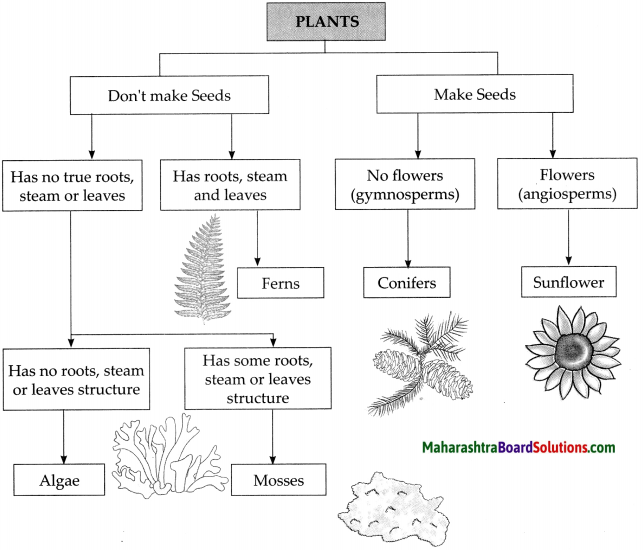
Question 2.
Taxonomy of carnivorous 1ant
Answer:
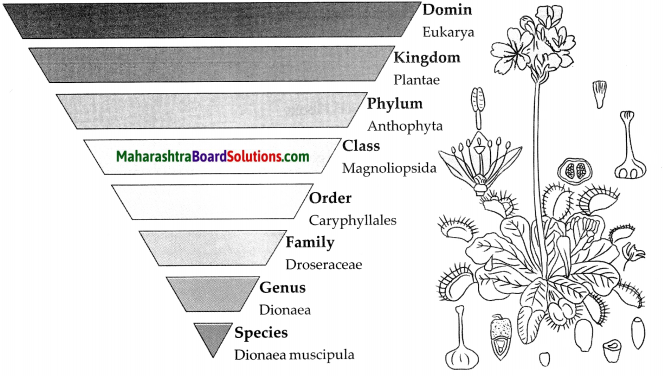
![]()
Question 3.
Taxonomy of mango plant
Answer:
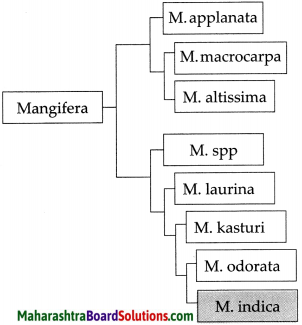
9th Std Science Questions And Answers:
- Laws of Motion Class 9 Questions And Answers
- Work and Energy Class 9 Questions And Answers
- Current Electricity Class 9 Questions And Answers
- Measurement of Matter Class 9 Questions And Answers
- Acids, Bases and Salts Class 9 Questions And Answers
- Classification of Plants Class 9 Questions And Answers
- Energy Flow in an Ecosystem Class 9 Questions And Answers
- Useful and Harmful Microbes Class 9 Questions And Answers
- Environmental Management Class 9 Questions And Answers
- Information Communication Technology (ICT) Class 9 Questions And Answers

